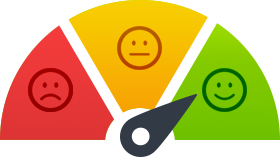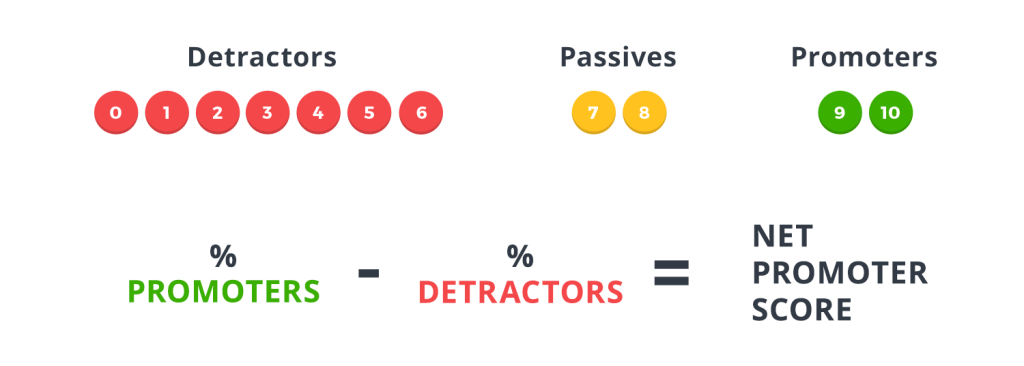In the previous post, we looked at why it’s crucial to aim at keeping your existing customers and what delighting them may bring you. Today, we’ll take a close look at how Net Promoter Score (NPS) works. Read on to get an instant Net Promoter Score guide.
Sadly, traditional customer satisfaction surveys fail at efficiency: They are lengthy. And instead of action, they inspire both endless and pointless analysis.
Using traditional surveys to get real feedback on customer happiness simply doesn’t work. Clients rarely want to go through the torture of answering 10+ annoying questions. No matter how loyal they feel towards your company.
![]()
NPS brings a simple solution to finding out who is your loyal client and who you can transform from an unhappy user to your satisfied promoter. That’s what the “P” in the NPS stands for: Promoter. Fred Reichheld at the Bain & Company originally designed the system in 2003. Initially, they tested a battery of questions to see the correlation between customers’ answers and their behaviour. As a result, the conclusion they came to was to use the following simple question:
“What is the likelihood that you would recommend Company X to a friend or colleague?”
No other question proved to be as efficient. Since high scores on it correlated strongly with repurchases, referrals, and other activities that drive companies towards growth. If you’re interested in finding out more from the authors’ point of view, read on here.
Sense and Sensibility
For the start, it’s simple: since NPS survey rarely asks more than one question–it increases response rate.

Integrating NPS tracking with Nicereply to your email is easy and contributes towards getting more feedback.
Next, asking about the “likelihood to recommend” is scored on a simple, intuitive zero-to-ten scale. The scoring is easy to track to a single (un)happy customer. Third, NPS is a number that you can track daily, monthly, or whenever; just like net profit. Finally, you can even break it down to business lines, stores, or by individual service reps for better accountability.
The Power of NPS calculation
We already know what to ask a customer to get the highest response rate. Let’s now look at how to calculate the NPS: Clients choose from a 0 – 10 scale, where 0 means poor likelihood and 10 its exact opposite.
Based on NPS research, we can group customers into three distinct categories with their respective scores: 1-6 are Detractors, 7-8 Passives, and 9-10 Promoters.
When you get all the scores, directly deduct low numbers from high numbers: Promoters minus Detractors. If you achieve the score greater than 0, you are doing well. A score of +50 is something all businesses that want to achieve long-term growth should aim at. When we, at Nicereply, integrated instant ratings, the number of collected ratings via smiley faces increased by 236% in a brief testing period.

Collecting Feedback Made Easy
Nicereply offers an easy way to integrate your NPS tracking into your customer care e-mail communication.
The benefit of using our NPS tracking comes with direct feedback after every customer-support interaction.
Many worry about its relevance. Sceptics say it’s because more enthusiastic customers tend to answer survey questions more than the less satisfied ones. Unfortunately, there’s no “quick-fix” for that. Therefore, the only thing you can do to ensure your NPS is growing towards positive numbers is value every feedback. But more importantly, follow-up with detractors, who may, as a result, become your promoters if you make them feel like you’re listening.
Score Collection Regularity
How often you collect and analyse NPS depends on your product’s planning cycle. But if you wish to have an instant idea of how well your customer service agents deal with clients’ responses, you can utilise the ratings weekly. Following your NPS reports at regular intervals is what also makes a true customer-focused executive.

In conclusion of our Net Promoter Score Guide, NPS brings you an (almost) effortless way how to track the likelihood of your customers becoming your free advertisers through word-of-mouth. The single question makes analysing responses easy. Subsequently it’s also immensely economical when converting Passives / Detractors to Promoters.







